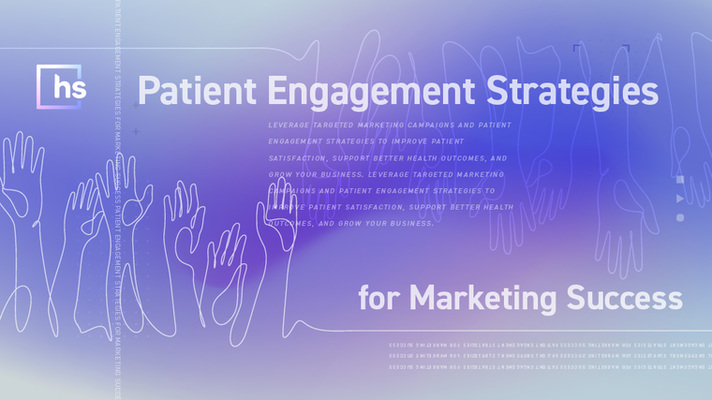
As a hospital or health system, you know the value of patient engagement.
You understand that it’s crucial for improving the overall patient experience and health outcomes for people of all socio-economic classes.
But are you up-to-date with the latest patient engagement strategies?
In this blog post, I’ll share ten targeted marketing campaigns to help you increase patient engagement.
But first, a primer on why this is a savvy investment for any hospital or health system.
According to the National Library of Medicine, patient engagement involves developing and fostering a collaborative patient-provider relationship to actively engage healthcare consumers in their decisions.
It has application in value-based care, patient population health, accountable care organizations (ACOs), and health management organizations (HMOs). It is often used as a lever for establishing more meaningful patient-provider relationships, empowering patients to take better care of themselves, and influencing increased consumer loyalty.
Spurred by the 2010 Patient Protection and Affordable Care Act, patient engagement trends have significantly influenced the healthcare landscape by introducing various provisions to improve the quality and accessibility of healthcare services. It has also empowered more healthcare consumers to demonstrate increased engagement and active participation in decision-making to ensure they receive the treatment they feel best meets their needs.
While patient engagement strategies are vital for all demographics, they hold particular significance for older, non-English speaking, and low-income populations.
Here’s a look at each demographic is more detail:
By encouraging higher levels of patient engagement across the board, healthcare providers empower healthcare consumers to
Leveraging the benefits of patient engagement often lead to improved patient satisfaction, better health outcomes, and more effective healthcare delivery.
As healthcare organizations strive to meet consumer expectations by creating patient-centered care experiences, modern marketing strategies play a crucial role in fostering patient engagement and driving positive health outcomes.
By leveraging these modern patient engagement strategies, your healthcare organization can better understand the importance of patient engagement in healthcare, proactively promote patient-centered healthcare, nurture stronger patient-provider relationships, and empower patients to take charge of their well-being.
These strategies not only help improve patient satisfaction and overall wellness but also work towards reducing costly emergency room visits.
Here are ten modern marketing strategies your healthcare organization can leverage to proactively promote patient-centered care, nurture stronger patient-provider relationships, and empower patients in healthcare decision-making.
As you learn how to increase patient engagement in healthcare through targeted marketing campaigns, be sure to follow all applicable laws and regulations (e.g., the Health Insurance Portability and Accountability Act or HIPAA) to protect patient privacy and confidentiality.
Improve patient satisfaction, support better health outcomes for all healthcare consumers, and grow your business with these integrated marketing and patient engagement strategies.
If you need help getting started with a healthcare marketing plan & strategy, we can help.
Request a proposal today.
Stewart Gandolf
Chief Executive Officer
The original version of this page was published at: https://healthcaresuccess.com/blog/patient-engagement/patient-engagement-strategies-for-marketing-success.html
Founded in 2006, Healthcare Success is a respected, full-service brand performance marketing agency focused on healthcare and recognized as a thought-leader in the industry.
How does a healthcare brand stay relevant in the digital age? How do you expand your reach and increase engagement on social media? And, how do you remain relevant to new generations ...read more
Healthcare consumers continue to move swiftly down the paths of least resistance toward quality care. This spells trouble for healthcare organizations that cannot change with the times.It’s ...read more
When done correctly, healthcare content can build trust and turn people into lifelong supporters of your brand. At the same time, creating superior health or wellness content can be ...read more
Best-in-class healthcare marketers are already planning for next year. They’re researching key trends that will attract new high-intent audiences, increase engagement, drive ...read more